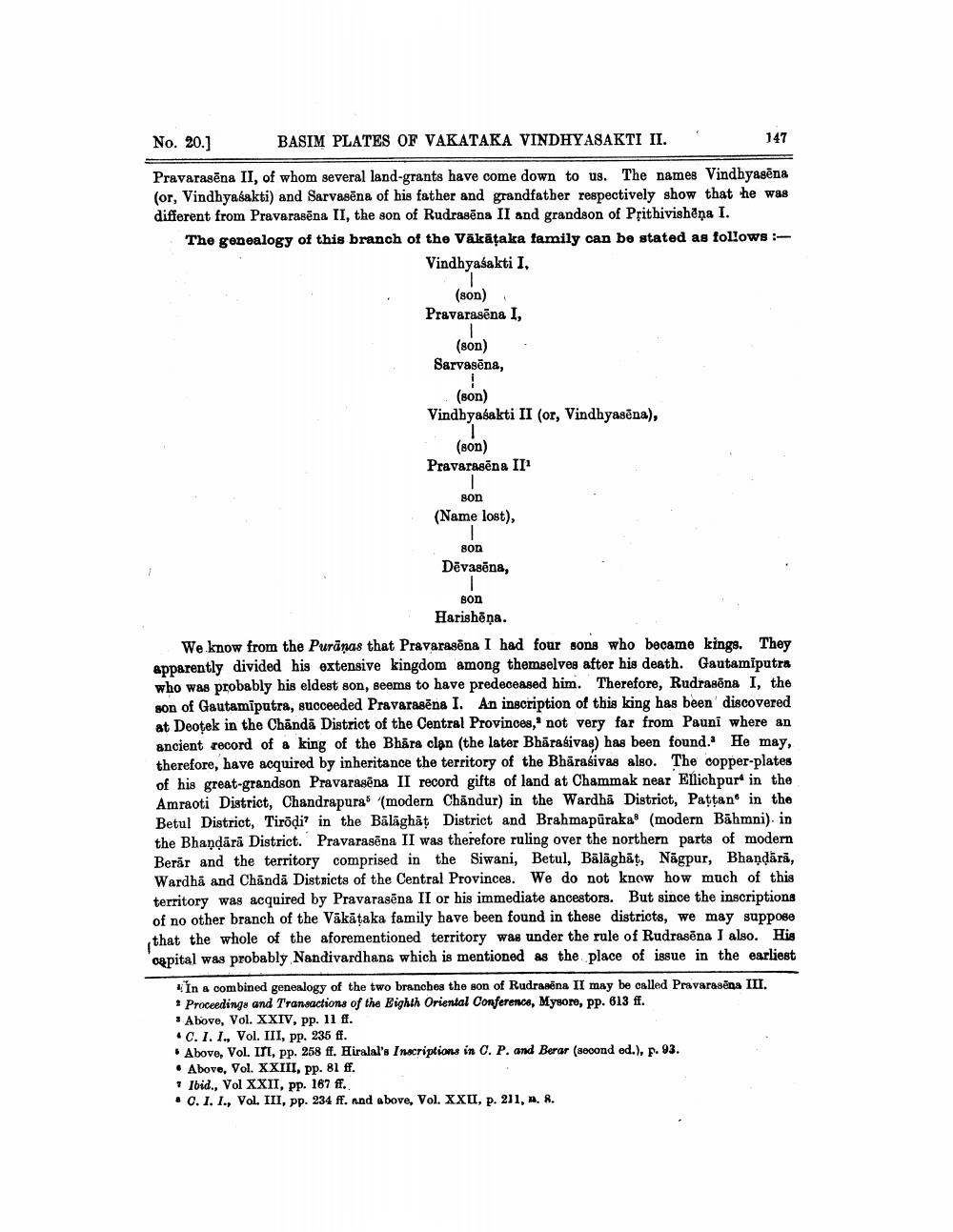________________
No. 20.]
BASIM PLATES OF VAKATAKA VINDHYASAKTI II.
147
Pravarasēna II, of whom several land-grants have come down to us. The names Vindhyagēna (or, Vindhyasakti) and Sarvasēna of his father and grandfather respectively show that he was different from Pravarasēna II, the son of Rudrasēna II and grandson of Přithivishèņa I. The genealogy of this branch of the Vākāțaka family can be stated as follows :
Vindhyasakti I,
(son) Pravarasēna 1,
(son) Sarvasēna,
(son) Vindhyasakti II (or, Vindhyasēna),
(son) Pravarasēna II
son (Name lost),
Dēvasēna,
son
Harishēņa. We know from the Purānas that Pravarasēna I had four sons who became kings. They apparently divided his extensive kingdom among themselves after his death. Gautamiputra who was probably his eldest son, seems to have predeceased him. Therefore, Rudrasēna I, the son of Gautamiputra, succeeded Pravarasēna I. An inscription of this king has been discovered at Deotek in the Chandā District of the Central Provinces,' not very far from Pauni where an ancient record of a king of the Bhāra clan (the later Bhārasivas) has been found." He may, therefore, have acquired by inheritance the territory of the Bhärasivas also. The copper-plates of his great-grandson Pravarasēna II record gifts of land at Chammak near Ellichpure in the Amraoti District, Chandrapura (modern Chandur) in the Wardhā District, Pattan in the Betul District, Tirödi? in the Balaghat District and Brahmapūraka (modern Bahmni) in the Bhandārā District. Pravarasēna II was therefore ruling over the northern parts of modern Berăr and the territory comprised in the Siwani, Betul, Bālāghāt, Nagpur, Bhandārā, Wardhā and Chåndā Districts of the Central Provinces. We do not know how much of this territory was acquired by Pravarasēna II or his immediate ancestors. But since the inscriptions of no other branch of the Vākātaka family have been found in these districts, we may suppose that the whole of the aforementioned territory was under the rule of Rudrasena I also. His ogpital was probably Nandivardhana which is mentioned as the place of issue in the earliest
In a combined genealogy of the two branches the son of Rudrasena II may be called Pravarasena III. • Proceedings and Transactions of the Eighth Oriental Conference, Mysore, pp. 613 ff.
Above, Vol. XXIV, pp. 11 ff. . C. 1. I., Vol. III, pp. 235 ff.
Above, Vol. III, pp. 258 ff. Hiralal's Inscriptions in C. P. and Berar (second ed.), p. 93. • Above, Vol. XXIII, pp. 81 f. * Ibid., Vol XXII, pp. 167 ff. • C. I. I., Vol. III, pp. 234 ff. and above, Vol. XXI, p. 211, A. R.




